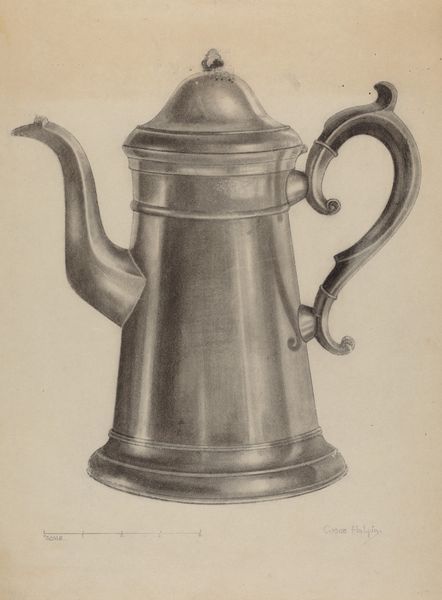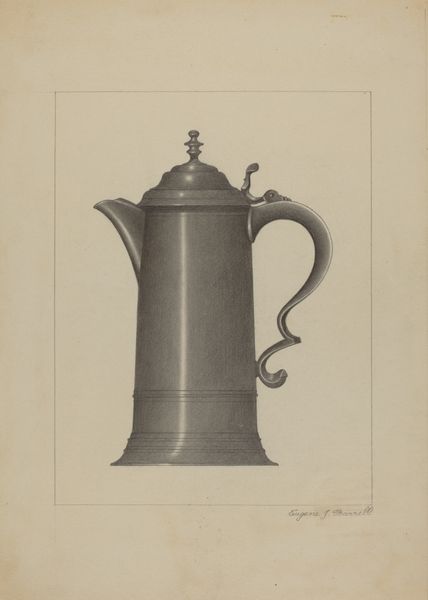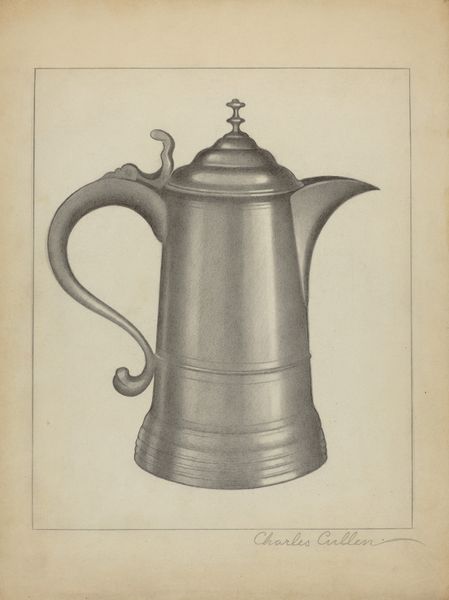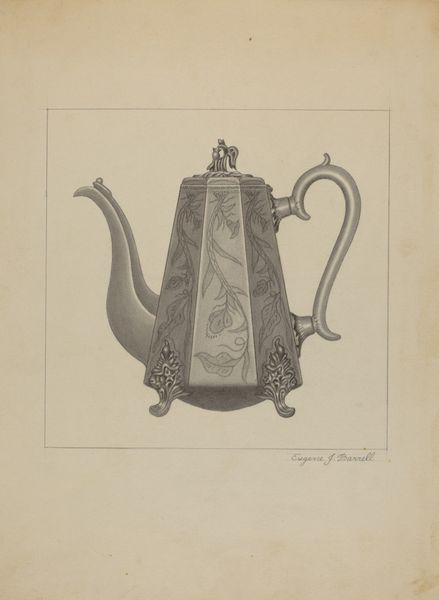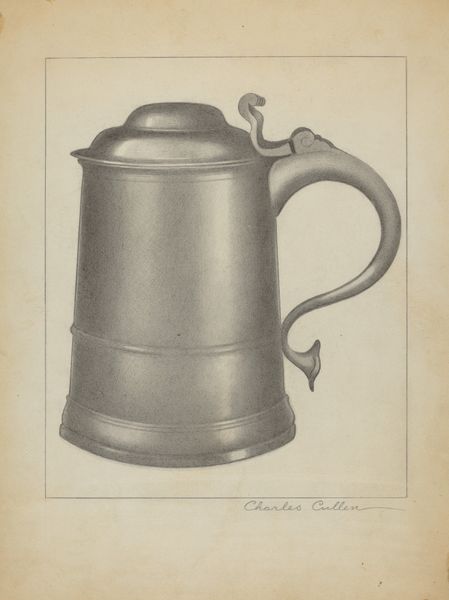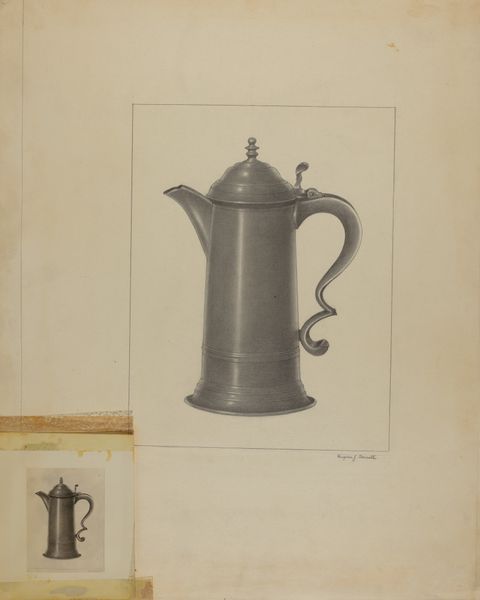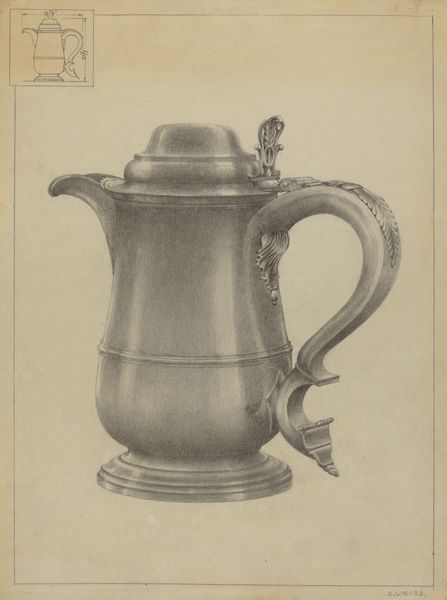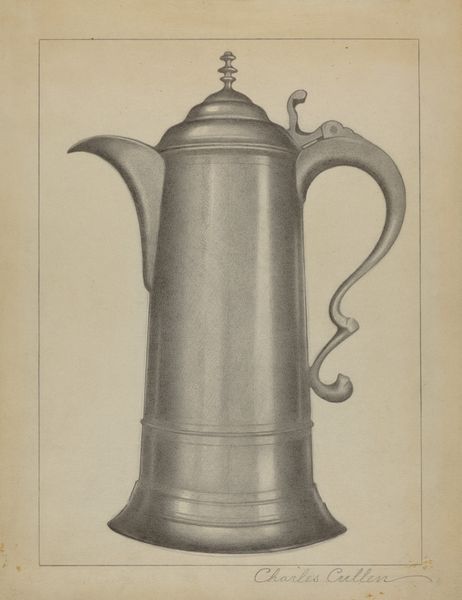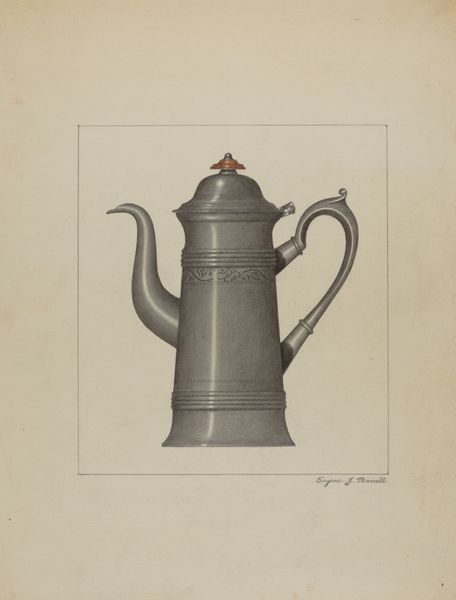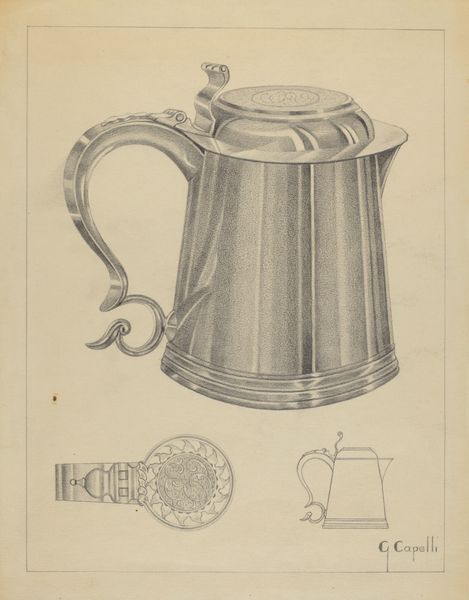
drawing
#
drawing
#
geometric
#
realism
Dimensions: overall: 25.9 x 19.9 cm (10 3/16 x 7 13/16 in.)
Copyright: National Gallery of Art: CC0 1.0
Editor: This is Eugene Barrell's drawing "Pewter Flagon," made sometime between 1935 and 1942. It’s rendered in precise detail, and honestly, feels very…still. What do you see when you look at this drawing? Curator: I see more than just a still life, I see a symbol of class and domesticity carefully constructed through realism. The flagon, in its meticulous detail, speaks volumes about societal expectations. We have to remember that in this period, during and just following the Great Depression, displaying items suggesting affluence, even in art, had a specific resonance. Who gets to partake of beauty, and who is excluded? Editor: So, it's not just about the object itself, but what it represents? Curator: Exactly! Realism wasn't just about depicting the world as it is, but often, about solidifying power structures and class divisions. Think about the function of a flagon, suggesting rituals around meals. Ask yourself, who’s setting this table? Editor: That gives the artwork a whole new meaning for me. The clean lines and the stillness I initially perceived become suggestive of these silent power dynamics. Curator: And this quietness speaks volumes, doesn’t it? What assumptions do we bring to this artwork? By engaging with art and theory we learn to challenge such inherent bias, viewing pieces like "Pewter Flagon" as artifacts of societal structures rather than merely a drawing of a flagon. Editor: It's fascinating how a seemingly simple drawing can reveal so much about society and culture. I'll definitely look at art with more critical eyes now. Curator: Excellent! Art should always provoke questions.
Comments
No comments
Be the first to comment and join the conversation on the ultimate creative platform.
